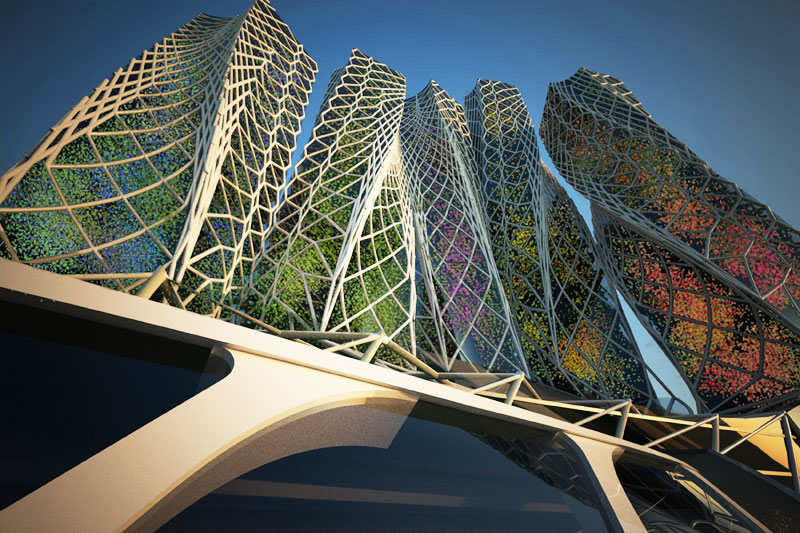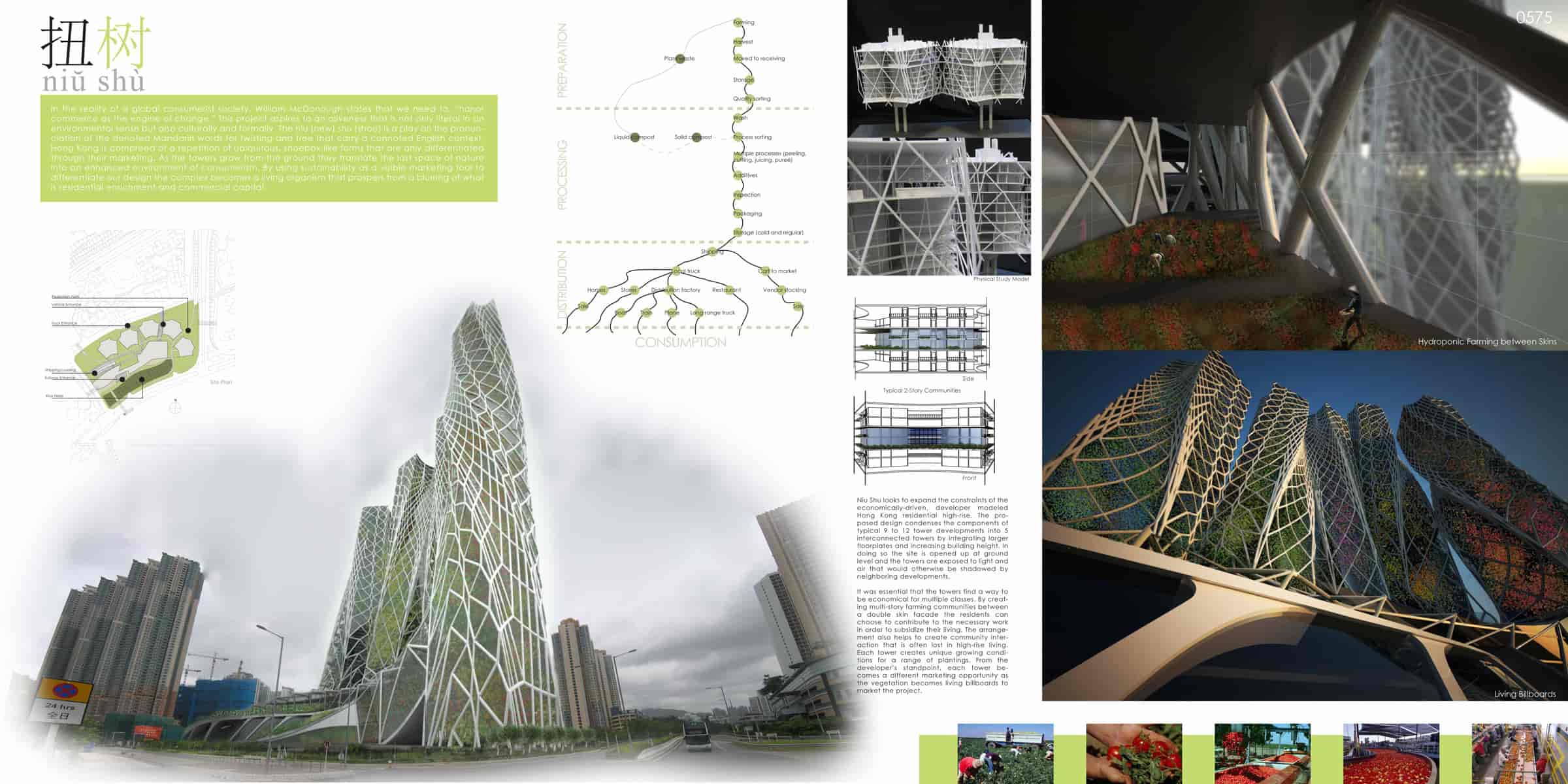Special Mention
2009 Skyscraper Competition
Francis Wilmore, Courtney Brinegar, Jennifer Cramer
United States

In the reality of a global consumerist society, William McDonough states that we need to, “honor commerce as the engine of change.” As noticed in many economically driven developments, it seems that Hong Kong’s consumerist priorities are often played out by real estate monopolies that devour opportunities for design innovation to take place. This can be observed in the city’s public housing market which consists of ubiquitous, shoebox-like forms that are only differentiated by their flashy marketing schemes. This project aspires to stand apart from Hong Kong’s existing built environment by fostering aliveness in the realms of environmental, cultural, and formal endeavors. The title of the project, Niu (new) Shu (shoe), is a play on the pronunciation of the denoted Mandarin words for “twisting” and “tree” that also carries a connoted English context of being a new shoe to fit Hong Kong’s current and future growth. The towers in the complex grow from the ground and translate the lost space of nature into an enhanced environment of consumerism. By using sustainability as a visible marketing tool to differentiate the design, the residential high-rise becomes a living organism that prospers from a blurring of what is residential enrichment and what is commercial capital.
By working within the constraints set forth by an economically driven market the complex finds a way to use design to create a more vibrant living environment while maintaining financial viability. Typical Hong Kong residential developments exist as a series of eight towers set atop an amenity filled podium. The addition of overall height and the expansion of floorplates to include nine living units allow this project to condense the same number of units and a similar percentage of amenity space into five towers. Subsequently, space is freed around the base of the towers for agriculture and recreation while also creating a buffer between Niu Shu and neighboring high-rises.
The primary architectural design stems from a double skin system that is employed to create an intermediary space for hydroponic farming. The exterior structural skin affords large clear spaces to engulf the residential units in greenery. Each residence becomes a part of a small community within a tower that is identifiable by the crop that they produce. The crops are further coordinated by color to give each tower a distinguishable identity. Various community types are differentiated by the height of the agricultural atrium which they are part of. Through the creation of these communities the typical hierarchical arrangement of income levels is altered. The top level of a tower may longer draw the highest price or afford the most interesting opportunities, but rather the potential to access a certain communal garden midway up the tower may cause one community to be more desirable than the next.
Members of the communities can either be passively educated by their surroundings or may choose to become actively engaged in the farming and food processing of the complex in order to subsidize their living costs. The towers’ forms take advantage of the range of growing conditions that are needed for different crops by twisting at varying angles to allow or block light to the different products. In doing so, razor edge connections are made between towers on floors where public amenity is then inserted. The connections allow for the concept of individuality to exist, while maintaining an overall cohesiveness to the complex’s circulation and function.
As the towers move back to their figurative roots near the ground, the produce harvested in each tower enters a shared processing facility where workers prepare the items for shipping or immediate sale in the market. Distributed items carry the Niu Shu branding thus creating a broader exposure for the development as the produce is consumed throughout the Pearl River Delta. The market supplements the exposure by not only servicing the development’s residents, but also by drawing people from other developments because of its adjacency to a subway stop. As non-residents are exposed to the market, they cannot help but be confronted with the growing process which is engulfing the towers above them. Niu Shu becomes a living billboard to attract new tenants, but, perhaps more importantly, a billboard that questions the situation of the non-residents’ ubiquitous amenities and overall living condition. Certainly the development would be a larger upfront investment, but the investment can be capitalized on while not stifling resident’s pocket books. Governments advocate more sustainable lifestyles, developers strive for differentiation, and city residents constantly seek meaningful relations to their living situation, yet all of these discussions exist as fragmented thought. Through creative approaches to design and development, Niu Shu aspires to fuse these conversations into a cohesive and viable typology. Though the project certainly stands to be architecturally iconic initially, the hope is that this one development can spur a further citywide adaptation towards a more culturally, formally, and environmentally alive urban fabric.


This work is licensed under a Creative Commons License permitting non-commercial sharing with attribution. https://creativecommons.org/licenses/by-nc-nd/4.0/



